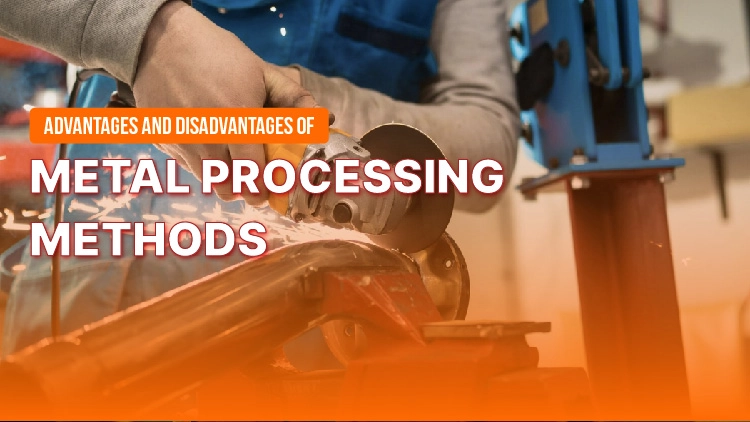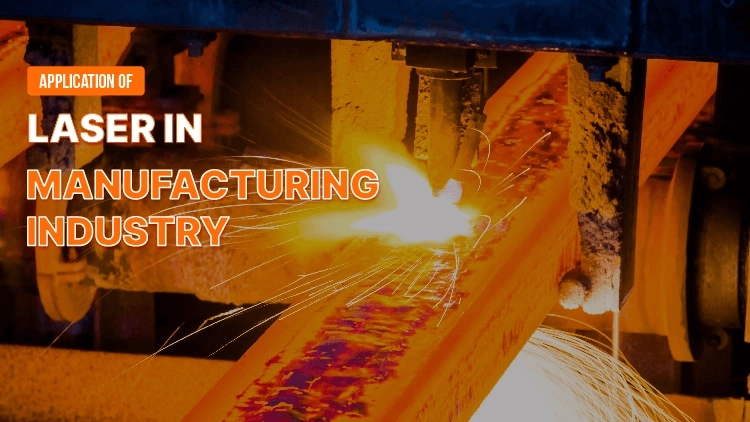Advantages and disadvantages of metal processing methods

Metalworking is the process of fabricating metal parts through various cutting, bending, casting, and machining methods. On the market today, there are many metal processing methods that are commonly applied in the industry, depending on the specific requirements of the product and the production process. In this article, join RX Tradex to learn about the advantages and disadvantages of metal processing methods and their applications in the metals industry today.
Advantages and disadvantages of metal processing methods
1. CNC turning machining method
1.1. Definition and principle of operation of CNC turning method
What is the CNC turning method? CNC (Computer Numerical Control) turning is a metalworking method that relies on a computer program to remove material parts from a workpiece to create desired parts. This method allows the production of machine parts used in various fields such as medical, military, electronics, automotive, aviation,...
There are two main methods in the CNC turning process: raw turning and fine turning. Raw turning is used to remove large amounts of material in a short time without concern for precision and surface finish. Meanwhile, the lathe creates smooth surfaces and the final correct-sized workpiece.

Advantages and disadvantages of metal processing methods
The principle of operation of the CNC turning method is realized by pre-programming the actions to be performed on the computer, specifically describing the position, direction of movement, and machining operations. This instruction is then transferred to the CNC lathe, where it is understood and executed. CNC lathes use electric motors and shaft systems to control the movement of cutters and machining tools on the surface of metal materials, producing precise and required metal parts.
1.2. Advantages and disadvantages of CNC turning method
Advantages of CNC turning method:
- Create parts with high precision, minimizing the occurrence of errors due to the workmanship of craftsmen.
- Capable of producing parts with high complexity and variety of shapes efficiently.
- Increase productivity and minimize production time compared to other manual methods.
- Pre-programmed processes help create the same products with high precision without much adjustment.
- Minimizing dependence on technicians and labor, which reduces labor costs and ensures stability in production.
Disadvantages of CNC turning method:
- Complex in programming, requiring technical personnel with highly specialized knowledge of computer programming to maintain and operate the machine.
- Limited in processing complex parts because products with sophisticated shapes or small parts are difficult to do by this method.
- Lathes depend on complex mechanical and electronic components, so once a problem occurs, it is easy to lose control.
- The initial investment cost is high, causing barriers for small and medium-sized enterprises when they want to use CNC lathes and install control systems.

Advantages and disadvantages of advanced CNC method
1.3. Application of CNC turning method in metalworking industry
CNC method is an important method in the field of metal processing, widely used in the metal industry, such as:
- Manufacturing machine parts: Used to process precision machine parts, with uniform dimensions and smooth surfaces, such as shafts, pulleys, mechanical bases,...
- Processing automobile components: Manufacturing important components such as engine parts, suspensions, gearboxes,..
- Aviation and aerospace component manufacturing: Provides the ability to fabricate complex and precise components used in the aviation and aerospace industry, including airframe structures, engine components, and interior components.
- Mechanical tool processing: Manufacturing mechanical tools such as molds, press molds, cutting tools,...
- Manufacturing of medical parts: Processing precision parts for medical devices such as surgical instruments, implants, and medical machine components.
- Outsourcing parts for the electronics industry: Manufacturing precision parts for the electronics industry, including printed circuit boards, computer cases,...
- ...
2. Metal injection molding (MIM) machining method
2.1. Definition and working principle of MIM metal injection molding method
What is a metal injection molding (MIM) method? Metal Injection Molding (MIM) is a method of producing complex metal parts by combining plastic injection molding technologies and metal fabrication technologies. In this procedure, the fine metal powder is mixed with the binder and then pumped into the mold. After being removed from the mold, the metal mixture is melted at high temperatures to produce dense and precise metal parts.
The metal injection molding method is widely applied in industries such as aerospace, medical, automotive, and electronics, especially for complex metal parts. This method provides a cost-effective and waste-minimizing solution for the production of small and complex parts.
The principle of operation of the metal injection molding method is carried out according to the following 4-step process:
- Step 1: Mix metal powder and plastic binder, forming a homogeneous mixture.
- Step 2: This mixture is injection molded into the mold, through an injection molding tube.
- Step 3: Use temperature and pressure to make the plastic adhesive go from liquid to solid state, holding metal particles together, making up the final part.
- Step 4: The part will be additionally machined if necessary such as grinding, polishing or heat treatment to improve hardness and heat resistance.
2.2. Advantages and disadvantages of MIM metal injection molding method
Advantage:
- Allows the production of high-precision and complex shaped parts that are difficult for traditional methods to implement.
- Highly flexible, allowing the production of parts of various sizes and shapes, from small parts to large parts, from basic to complex shapes.
- Low production costs compared to traditional methods, especially in mass production of complex parts.
Disadvantages:
- The complexity of the process is high, requiring technicians with deep professional experience in the precise implementation of technological steps and with strict control of temperature and pressure.
- Limiting the possibility of using various metal materials.
2.3. Application of metal injection molding method in the metal processing industry
The metal injection molding method is being widely applied in the metalworking industry, especially in the fields of:
- Electronic components: Manufacturing electronic boxes, connecting parts, and interior components for electronics.
- Automotive: Manufacturing metal components such as gears, steering system parts, and other parts with high precision and good bearing capacity, meeting strict requirements in the automotive industry.
- Medical: Manufacturing complex and precise parts for medical equipment such as staples, surgical instruments, and implant components.
- Aviation and aerospace: Manufacture metal components such as valves, fasteners, and aircraft parts with high precision and good bearing capacity.
- Energy industry: Manufacturing metal components for the energy industry such as parts of spectrum devices and components of lithium battery systems.
- Other Industrial Applications: In addition to the above fields, MIM is also used in other industries such as toy industry, jewelry industry, and manufacturing tools that need high-precision metal.
3. Metal processing by Plasma cutting method
3.1. Definition and principle of operation of plasma cutting method
What is a Plasma Cutting Method? Plasma cutting method, one of the most popular metal processing methods by cutting today, uses an ionized gas to cut metal materials. In this process, plasma is created through the use of electrodes to ionize and fuse the gas, creating a high-temperature plasma stream.
Based on the principle of taking advantage of high temperatures and large transmission speeds of gases, plasma cutting method uses gases capable of conducting electricity when supplied with a large enough energy source. The oxidation process occurs extremely strongly and the continuous current from the ionization of gas atoms will create a plasma flow. This plasma stream is directed to the plasmatron head to melt and blow the metal from the cutting groove.
3.2. Advantages and disadvantages of plasma cutting method
Advantage:
- Fast cutting speed: Allows cutting metal materials at fast speed, which increases production efficiency.
- Diverse cutting ability: Can cut a variety of metal materials, from carbon steel to stainless steel and aluminum.
- Ability to cut complex shapes: Can be adapted to cut complex shapes that other cutting methods cannot do.
Disadvantages:
- Not applicable to non-metallic materials.
- The thickness of cutting material is limited.
- Causes noise, dust and harmful emissions, affecting the environment and human health.
- Operating costs are high because the process of operating a plasma cutting machine can consume a lot of energy.
In order to take advantage of and overcome the disadvantages of plasma cutting, it is necessary to use advanced equipment and technologies, along with strengthening environmental management in the machining process. At the same time, the implementation of periodic inspection and maintenance of machinery systems is very important to ensure that the performance and accuracy of the plasma cutting process are maintained stably.
3.3. Application of plasma cutting method in metalworking industry
Plasma cutting method is widely applied in the metalworking industry with a variety of applications such as:
- Sheet metal cutting: Used to cut metal sheets into shapes and sizes ranging from large sheets to small, flexible and precise parts.
- Welding machining: Used to prepare cross-sections for the welding process, creating clean and precise surfaces to ensure the tight connection and strength of the weld seam.
- Industrial metal manufacturing: Manufacturing parts and components for machinery, equipment, and other industrial products.
- Forming metalworking: Forming and cutting complex parts, art models and industrial products with high technical requirements.
- Automotive and aviation manufacturing: Manufacturing parts and components with high precision and durability.
- Shipbuilding industry: Cutting and machining large sheets of metal to create structural components of ships.
Conclusions
The above is a summary of the advantages and disadvantages of metal processing methods mentioned by RX Tradex Vietnam . Depending on your specific production needs, you can choose the most suitable method for your production process. In addition, you can join METALEX Vietnam 2024 event organized by RX Tradex Vietnam to update more about the latest metalworking methods and discover more advanced machinery and equipment in the industry today.






